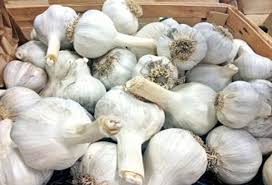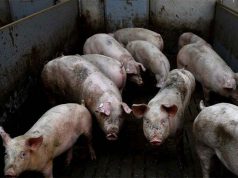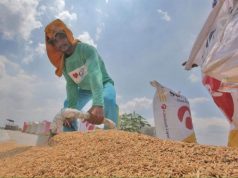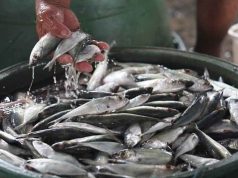MANILA – The Agriculture department wants local farmers to produce more garlic to help control prices, which have risen by as much as P40 a kilo.
The Philippines depends on imports for most of its garlic needs, and Agriculture Secretary Manny Piñol said traders may be manipulating domestic prices.
“We will start a national garlic development program which will produce sizable volumes of garlic to make sure [that in] times like this, importers can’t manipulate prices. Government can come in and stabilize prices in the market,” said Piñol.
What is happening in garlic is similar to what he had been warning of in the case of rice, and it is the same fear he has when people talk about just importing and not bothering to plant more.
“They can play around with us; the price can be manipulated dahil wala tayong pantapal sa merkado [because we have no supply to cover the gap in the market].”
Piñol declared, “we will plant garlic and we will make sure garlic prices [of the local produce] will be competitive with those imported, and we will produce enough to stabilize prices.”
Garlic prices have been going up and officials have said actual imports haven’t been jibing with expected shipments.
Aside from providing technology to garlic farmers, Piñol said the DA wants to expand farm areas to include military camps.
Lean season
Market prices of garlic have gone up, and officials are blaming the lean season and a lack of supplies from abroad.
Harvest has not peaked yet in India and China, main sources of imported garlic, according to Agriculture Undersecretary Ariel Cayanan.
And, because it’s the lean season, prices are moving up, he explained.
Garlic prices have gone up by 40 to 50 pesos per kilo since February, from a range of P150-160 to the current P200.
Vendor Irene Paragatos said buyers have started complaining, particularly since locally farmed garlic is more expensive.
“Talagang hirap po; pagkamahal ang bilihin, di mo mabibili. Ngayon ang laki ng tinaas talaga [It’s really hard. Prices are so unaffordable. The spike is truly steep],” Paragatos said.
For buyer Marites de Francia, the P200 a kilo tag is too high, so she ended up buying only one fourth of a kilo.
The agriculture department and the Bureau of Plant Industry have started to check for hoarding.
Only a fourth of imports are in
Visits to two warehouses showed limited supplies, and Undersecretary Cayanan said less than a fourth of expected imports had arrived so far.
Based on Bureau of Plant Industry data, 57,150 metric tons of garlic should have come in between January and May but only 12,440 metric tons was actually shipped.
Local production won’t be able to fill the gap as it’s normally enough for just 6 percent of domestic consumption.
Cayanan said the country is “highly dependent on importations, so if the source country’s harvest is lean, or the timing is not right, there’s a domino effect.”
Cayanan said prices could decrease around mid-July.
He also proposed tariff cuts to spur imports. “We will suggest that in this situation, there might be a way to relax tariffs for imports in order to encourage the importers.”
Officials said the issue could also be raised with the Trade department.










